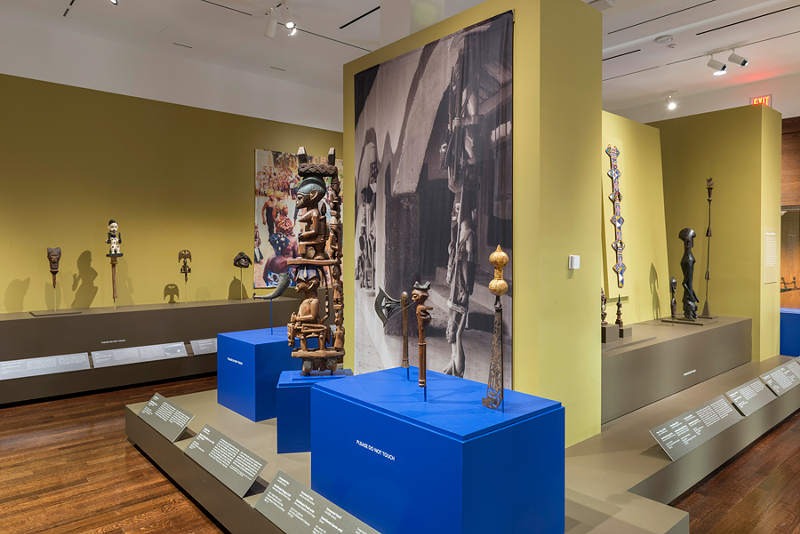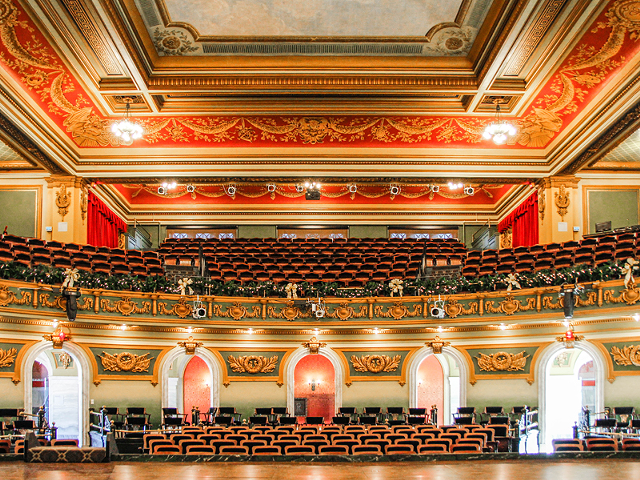Curators and art scholars, working collaboratively, have thematically reframed this latest installation into new groupings that underscore the relationships between the artists and patrons of African traditions-based arts.
Steckelmann’s collection is a snapshot of West African art at the end of the 19th century, and many of the objects on display in the gallery demonstrate the ways in which artists along Africa’s Atlantic coast catered to European and American patronage in the wake of centuries of the transatlantic slave trade. These specific beautiful objects often speak to the gluttony of the art market.
The gallery had been displaced in 2014 when construction began on the first-floor renovation that included the new Rosenthal Education Center; it now resides just beyond the education center.
Because the museum doesn’t currently have a specific curator for this collection on staff, Chief Curator and Curator of Fashion Arts and Textiles Cynthia Amnéus worked with outside curator Nichole Bridges and local scholar William Hommel on the reinstallation. Together, they reconsidered and reframed the strengths of the collection, which is one of the oldest holdings of African material culture owned by an art museum in the country.
Bridges, who serves as associate curator for African art at the Saint Louis Art Museum, was already intimately familiar with the Steckelmann Collection. As a grad student in 2005, Bridges, a then-doctoral candidate, had come to the CAM to study the various ivory relief tusk sculptures that Steckelmann had commissioned. Thus, she was a natural fit for helping the museum recontextualize the objects on display.
These 19th- and 20th-century African objects have been grouped into five general themes: Leaders (political and familial); Masqueraders and Performers, including masks, costumes and musical instruments; Seekers and Healers, including tools of ritual specialists, which were often commissioned by those involved in some kind of religious or spiritual practice; Home, Family, Self, featuring everyday objects like textiles, dolls, baskets and cloth; and highlights from the Steckelmann Collection, featuring some of Bridges’ favorite subjects — including the aforementioned ivory tusks.
Due to conservation issues, several objects made from light-sensitive materials (including the tusks, textiles and items made from grasses) will rotate in and out of display every one-and-a-half years.
Other noteworthy artworks in the gallery include an early 20th-century veranda post. Carved out of one piece of wood, the highly detailed object would’ve announced the owner of the house as someone of high status in the community. It is the only object in the exhibition with a known and attributed maker. Sculpted by one of the most famous Yoruba artists in Nigeria, Agunna of Oke Igbira, the post features two figures: a male riding a horse and a female holding a child.
The fact that most of the artists within the gallery are listed by combining the title “Unattributed artist” with their cultural identity speaks to the typical lack of provenance information for colonial collections like Steckelmann’s.
“There is evidence of some really excellent artistic skill and craftsmanship throughout this gallery,” Bridges says. “But the fact that we don’t have named artists really speaks to the context in which they were collected: No one bothered to ask.”
With continued investment from institutions like the Cincinnati Art Museum and ongoing intellectual investigation by scholars like Bridges, collections like Steckelmann’s can better serve our understanding of African art history in ways that acknowledge and value the voice of the African artist.
The Cincinnati Art Museum’s AFRICAN ART gallery is now open. More info: cincinnatiartmuseum.org.






